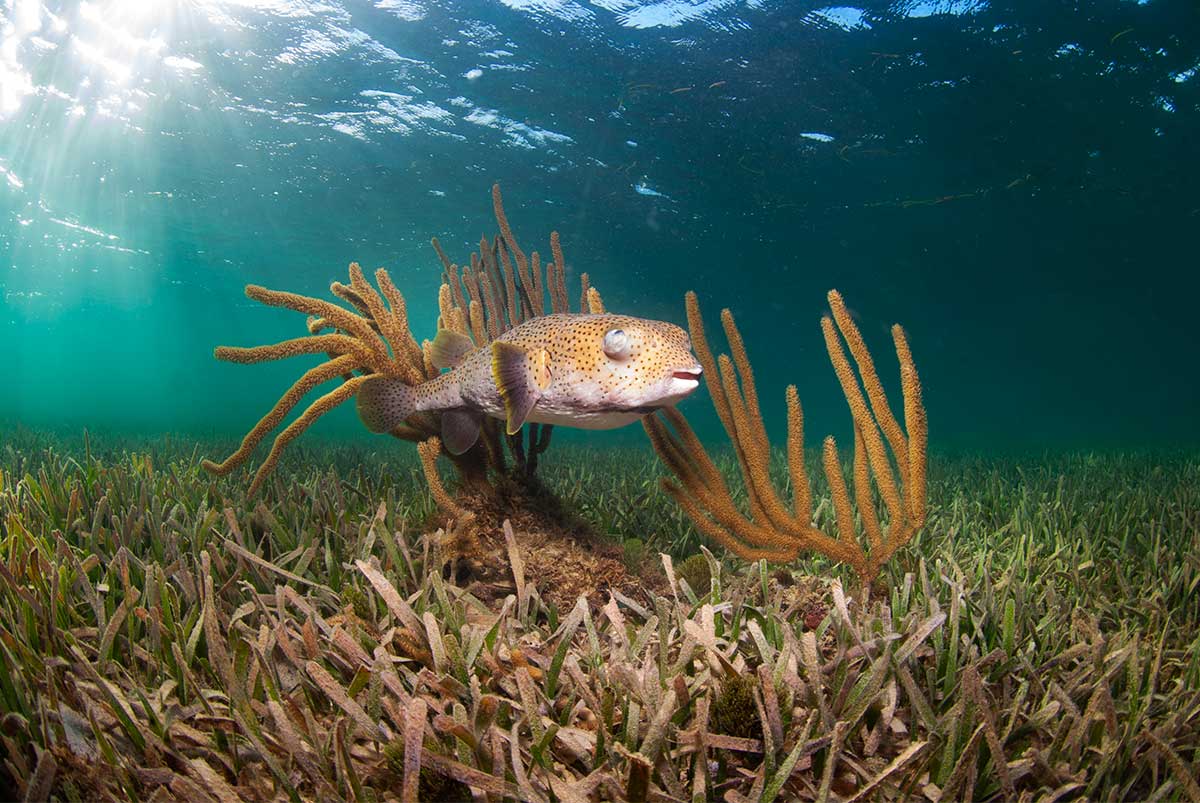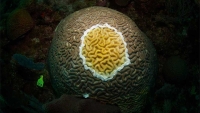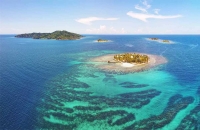Seagrass is indeed the most under appreciated marine habitat. When we talk about the beauty of the ocean we mainly think about coral reefs and mangrove forests. Divers and snorkelers don't really care about seagrass, they just swim straight past it. And its importance and beauty is usually underestimated. But if you take a closer look at it seagrass opens up to you as one of the most interesting and fascinating ocean habitats. A magical green world holding up hidden surprises able to astonish as much as coral reef and mangroves.
SEGRASS IS NOT GRASS!!!Despite the misleading name, seagrass is not really grass. It is actually more related to a flower.
Seagrass is basically the only submerged flowering plant that thrives in shallow marine waters, and it represents a vital part of the marine ecosystem. There are approximately 60 different species of seagrass grouped in four main families (Posidoniaceae, Zosteraceae, Hydrocharitaceae and Cymodoceaceae). They all evolved from terrestrial plants back to recolonize the ocean around 100 million years ago.




THERE ARE SEVERAL REASONS WHY SEAGRASS IS IMPORTANT FOR THE ECOSYSTEM.
√
Seagrass produces the vital elements for the submerged ecosystem and helps to fight climate change.
Seagrass produces the vital elements for the submerged ecosystem and helps to fight climate change.
Just like their relative terrestrial plants, seagrass has leaves, roots, they produce flowers and seeds, and most important they photosynthesize. They live in shallow water to catch as much sun as possible in order to accomplish the submarine pollination and complete their life cycle. They convert carbon dioxide into sugar and oxygen providing the essential conditions for a healthy coastline ecosystem. The importance of seagrass is comparable to coral reefs.
Seagrass is so productive that it can absorb carbon dioxide in excess. Some species of seagrass are 35 times more effective than rainforests in capturing and storing carbon.
√
Seagrass protects sea coast from erosion.
Seagrass protects sea coast from erosion.
Thanks to the deep and strong root structures and their leaves extending toward the surface seagrass meadows not only slow down the underwater currents that bring sediment and other elements, but it actually allows all these sediments to settle down protecting the coastline from erosion. Recently studies have shown that large meadows of seagrass beds, together with mangroves and reefs help slow down ocean’s wave energy, helping to protect human life and activities on shore from storms.
√
√
Seagrass provides food and habitat for many marine organisms.
Seagrass beds can be seen as the nursery of the ocean. In fact its a perfect habitat for spawning and nursery for many marine species that find shelter and protection amongst the long leaves. Small fish, large manatees, sharks, turtles, seahorses, shrimps and octopus like to visit and live around seagrass leaves.
The concentration of life in the seagrass is very dense. It is usually hundreds times more than in sandy areas. The Smithsonian Institution’s National Museum of Natural History reports that In a single acre of seagrass can live up to 40,000 fish and 50 million small invertebrates.
√
Seagrass maintains water quality.
Similar to mangroves, seagrass habitats work as an ocean filter. Purifying and filtering the pollutants, absorbing excess nutrients from runoff, trapping sediments and removing bacteria help to increase the clarity and quality of waters.
√
Seagrass supports local economies.
For all the above reasons, seagrass supports the economies of all the local communities that live along the coastline. They provide an important source of food and resource and create the essential and indispensable conditions for the people and businesses that live off tourism and rely on commercial and recreational fishing.
An exhaustive study about seagrass from the University of New Hampshire, estimated the monetary value of seagrass meadows at $19,000 per hectare per year, one of the highest valued ecosystems on earth.
Sadly, just like everything else in nature in this century, seagrass is in danger and it is suffering from human activities and negligence. The latest estimates from the IUCN (International Union for the Conservation of Nature) shows SEAGRASS ECOSYSTEMS ARE IN DECLINE BY 7% A YEAR EVERYWHERE IN THE WORLD. Despite its importance, seagrass is amongst the fastest disappearing habitats on the planet.
WATCH MORE SEAGRASS VIDEOS ON OUR YOUTUBE CHANNEL
Sadly, just like everything else in nature in this century, seagrass is in danger and it is suffering from human activities and negligence. The latest estimates from the IUCN (International Union for the Conservation of Nature) shows SEAGRASS ECOSYSTEMS ARE IN DECLINE BY 7% A YEAR EVERYWHERE IN THE WORLD. Despite its importance, seagrass is amongst the fastest disappearing habitats on the planet.
All photos and video taken In Sandy Bay seagrass area from PUERTA AZUL, dock, Roatán, Bay Islands, Caribbean Sea.



